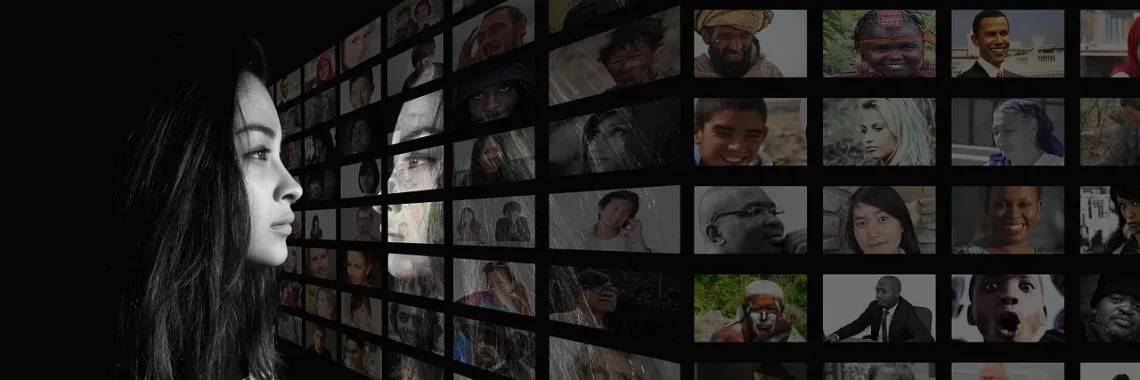
Exploring the Controversy Surrounding Incest Scenes in Media
The portrayal of taboo subjects in media has always sparked heated debates among audiences, critics, and creators. Among these topics, incest stands out as one of the most controversial and polarizing. This sensitive subject often elicits strong emotional responses, as it touches upon deep societal norms, moral boundaries, and familial dynamics. The representation of incest in films, television shows, and literature not only challenges viewers’ perceptions but also raises critical questions about the impact of such narratives on societal attitudes and individual behavior.
In many cultures, incest is a significant taboo, often associated with severe legal, ethical, and psychological implications. Yet, despite this stigma, works of fiction have ventured into this territory, sometimes exploring the complexities of human relationships and the gray areas of consent and power dynamics. The depiction of incest can serve various purposes in storytelling, from igniting conflict to highlighting the psychological struggles of the characters involved. However, these portrayals often face backlash, with critics arguing that they may normalize or romanticize harmful behaviors.
As we delve deeper into this topic, it becomes essential to understand the nuances surrounding incest in media. By examining the reasons behind its depiction, the societal reactions it provokes, and the potential consequences of such narratives, we can gain a clearer understanding of this contentious subject. This exploration not only sheds light on the media’s role in shaping societal values but also prompts us to reflect on our own beliefs and boundaries regarding familial relationships.
The Historical Context of Incest in Storytelling
To fully grasp the controversy surrounding incest scenes in media, it’s crucial to consider the historical context in which these narratives have evolved. Throughout history, various cultures have depicted incest in their myths, legends, and literary works. For instance, ancient Greek mythology is rife with tales of gods and mortals engaging in incestuous relationships, often resulting in complex family dynamics and tragic outcomes. These stories, while unsettling, served to convey moral lessons and explore the darker aspects of human nature.
In the literary canon, incest has been portrayed in diverse ways, from the tragic love stories of Shakespeare to the psychological explorations of modern authors. Classic literature often used incest to highlight the destructive power of forbidden love, while contemporary narratives may delve deeper into the psychological implications for the characters involved. This evolution reflects changing societal attitudes towards family, sexuality, and morality.
Moreover, the historical portrayal of incest in media has often mirrored societal norms. In societies where familial bonds were paramount, incestuous relationships could be viewed as a means of preserving power, wealth, or royal lineage. Conversely, in more progressive societies, these relationships are often condemned, leading to a complex interplay between tradition and modernity in storytelling.
As media continues to evolve, the representation of incest remains fraught with challenges. While some creators aim to tackle the subject with sensitivity and nuance, others may exploit it for shock value or sensationalism. This distinction is vital in understanding the impact of these narratives on audiences and the broader cultural discourse.
Reactions to Incest in Popular Media
Incest scenes in popular media often provoke intense reactions, ranging from outrage to intrigue. The audience’s response can be influenced by various factors, including cultural background, personal experiences, and societal norms. For some viewers, these depictions may evoke feelings of disgust or discomfort, while for others, they might spark curiosity or even fascination.
Critics often argue that the portrayal of incest can trivialize serious issues such as abuse, manipulation, and trauma. When incest is depicted as romantic or glamorous, it risks normalizing harmful behaviors and desensitizing audiences to the psychological consequences of such relationships. This concern is particularly relevant in the context of younger audiences, who may be more impressionable and susceptible to the messages conveyed through media.
On the other hand, proponents of including incestuous narratives in media suggest that these stories can serve as a means of exploring complex human emotions and relationships. They argue that, when handled with care, such depictions can lead to important conversations about consent, power dynamics, and the nature of familial bonds. By confronting uncomfortable subjects, creators can challenge societal taboos and encourage viewers to reflect on their own beliefs.
Additionally, the rise of streaming platforms has led to an increase in diverse storytelling, allowing for more nuanced portrayals of incest. Some shows have tackled the subject with a focus on character development and moral ambiguity, prompting audiences to grapple with their own judgments and assumptions. This shift in narrative style reflects a growing willingness to explore taboo subjects in a more thoughtful and complex manner.
Ultimately, the reactions to incest in popular media highlight the delicate balance between storytelling and societal responsibility. As audiences become more aware of the implications of such representations, the call for sensitivity and ethics in storytelling will likely continue to grow.
The Ethics of Depicting Incest in Media
The ethical considerations surrounding the depiction of incest in media are multifaceted and complex. Creators must navigate a fine line between artistic expression and social responsibility, as the consequences of their narratives can extend far beyond the screen. The portrayal of incest raises questions about consent, agency, and the potential for triggering trauma among viewers.
One of the primary ethical concerns is the portrayal of consent in incestuous relationships. In many narratives, power dynamics play a crucial role, with one character often being in a position of authority or influence over the other. This raises questions about the validity of consent and whether it can truly exist within the confines of familial relationships. When creators choose to depict these dynamics, they must be aware of the potential implications and the message they convey to audiences.
Moreover, the risk of romanticizing or sensationalizing incest poses significant ethical dilemmas. When such relationships are portrayed without acknowledging the psychological and emotional consequences, it can lead to a misunderstanding of the realities faced by those involved in similar situations. This is especially concerning in a media landscape that often influences public perception and attitudes.
Additionally, creators have a responsibility to consider the potential impact of their work on survivors of abuse or trauma. For individuals who have experienced incestuous relationships, seeing such narratives portrayed in media can be triggering and may evoke painful memories. This highlights the importance of sensitivity and careful consideration in storytelling.
As discussions about media ethics continue to evolve, the portrayal of incest remains a contentious issue. Creators must balance their desire for artistic freedom with the responsibility to engage with their audiences thoughtfully and ethically. By doing so, they can contribute to a more informed and compassionate discourse surrounding this deeply complex subject.
Conclusion: Navigating the Complexities of Incest in Media
The portrayal of incest in media serves as a reflection of societal values, moral boundaries, and the complexities of human relationships. As audiences grapple with their responses to these narratives, it becomes clear that the discussion surrounding incest is far from straightforward. While some may argue for the necessity of exploring taboo subjects in storytelling, others caution against the potential normalization of harmful behaviors.
As creators continue to navigate the challenges of depicting incest, it is essential for them to approach the subject with sensitivity and awareness. By fostering open conversations about the ethical implications of their work, they can contribute to a more nuanced understanding of the complexities surrounding human relationships. Ultimately, the exploration of incest in media invites us to reflect on our own beliefs and values, challenging us to confront the boundaries of acceptable storytelling.
It is essential to note that this article does not serve as medical advice. For any health-related concerns or questions, it is always recommended to consult with a qualified healthcare professional.




